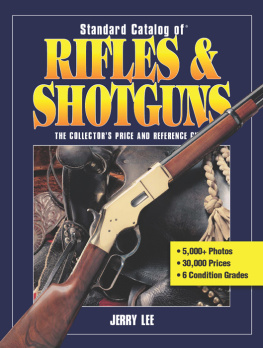


Copyright 2018 by Robert K. Campbell
All rights reserved. No part of this book may be reproduced in any manner without the express written consent of the publisher, except in the case of brief excerpts in critical reviews or articles. All inquiries should be addressed to Skyhorse Publishing, 307 West 36th Street, 11th Floor, New York, NY 10018.
Skyhorse Publishing books may be purchased in bulk at special discounts for sales promotion, corporate gifts, fund-raising, or educational purposes. Special editions can also be created to specifications. For details, contact the Special Sales Department, Skyhorse Publishing, 307 West 36th Street, 11th Floor, New York, NY 10018 or info@skyhorsepublishing.com.
Skyhorse and Skyhorse Publishing are registered trademarks of Skyhorse Publishing, Inc., a Delaware corporation.
Visit our website at www.skyhorsepublishing.com.
10 9 8 7 6 5 4 3 2 1
Library of Congress Cataloging-in-Publication Data is available on file.
Cover design by Tom Lau
Cover photo credits: Chiappa, Marocchi, Mossberg, iStockphoto
Print ISBN: 978-1-5107-2483-9
Ebook ISBN: 978-1-5107-2484-6
Printed in China
CONTENTS
PREFACE
F or decades now, many of which Ive spent in law enforcement, I have relied upon the same proven equipment for my self-defense and emergency preparation needs. That equipment consists of Colt 1911 pistols, Remington 700 rifles, and Remington and Mossberg shotguns. After seeing many changes in law enforcement through the years, I realize that each new piece of equipment we were handed required more training. To operate a radar unit the officer must understand not only how to set the radar up, but also take a class heavy on Hertzogs and the like. We now have computers in every vehicle in most jurisdictions giving us critical access to important information, but they took training too.
With firearms, the new class of polymer-frame handguns were another addition that took acclimation. They are lightweight and reliable, which is beneficial considering all of the other gear officers now carrybut oh, were they different from other semi-autos and the revolvers before them.
Among all these changes, the pump-action shotgun has remained the same. These are simple firearms that require a minimum of training. Today there are more dangerous felons than ever, and many of them are well armed. The chances of facing gangs of criminals or even terrorists is higher than ever. Night battle is another consideration that must be accounted forand not just for law enforcement, but also for the average citizen.
Crime comes in all shapes and sizes. Most of us think about the types that make headlines: armed robberies, car jackings, home invasions, rapes, and other physical assaults. But those arent the only emergencies that happen to people. Natural disasters such as wildfires, hurricanes, tornados, ice storms, and earthquakes can leave communities without running water and power for weeks on end. Increasingly on the minds of some is how to be prepared for an even bigger emergency, such as a foreign attack that takes the country off-grid and into hysteria. It is with a nod toward all of these that this book is written, for to be fully prepared to face the worst, no tool in your bag of preparations can perform so many tasks as the shotgun.
The emergency shotgun is a rack-grade firearm that comes up shooting no matter what. It can stop an attacker bent on taking your life or that of your loved ones, stop someone from taking over a shelter needed to survive, and put food on the table when protein is scarce. It can protect your less-perishable food stores from vermin and theft, and it can launch special munitions that signal for help or temporarily incapacitate an attacker. No matter whos behind its trigger or whats in its chamber, a shotguns barrel is one into which no adversary wants to stare.
You have picked up this book because you have thought about how to prepare for the worstgood for you! I encourage you to digest all this book offers and others on the subject. Seek out training from professionals who specialize in survival tactics. Always, continuously be aware of your surroundings and think about what might happen in the realm of things not good, think about where you are, where you might be, and how youll respond. If that response involves a shotgun, then youll be better prepared for having read this book. Good luck, good shootingand may you never have need to use what you learn here.
Robert K. Campbell
INTRODUCTION
W hen I first began shooting shotguns, I pursued small game. Id had considerable time behind a .22 rifle, graduating from my first single-shot to a self-loader. Moving to a harder-kicking shotgun (harder-kicking compared to the .22 rifle), in the beginning, under the careful supervision of my grandfather, I fired a few shots from a .410-bore; I was awed by the power of this inoffensive shell.
That single-shot, bolt-action Mossberg served well. Once I had the okay to take it into the field, I was impressed with the shotguns ability to put game on the table (after all, prior to my time with that .410, I had been helpless against running game, and Id hunted only squirrel and the occasional bedded rabbit with the .22 rifle).
The shotgun added new dimensions to the hunt. With the Mossberg bolt-action .410 over my shoulder, I headed into the forest and began regularly taking small game. Running game fell, and bedded rabbits were not torn up badly when taken with a headshot. My grandmother patiently prepared this game for the table. The meat was very good and healthier than the table fare to which most of us have become accustomed. Advancing to flying game such as dove and quail, however, I was limited by the performance of the .410-bore shotgun, and so I restricted my shooting to the ranges at which I felt I could connect. I never patterned the gun on paper, because no one told me to.
When my grandfather knew I was ready, I graduated to a Mossberg 500 12-gauge shotgun and larger game. The pump-action wore a 28-inch barrel with a Modified choke. I began to appreciate quiet walks in the dark to the hunting field, the dew on the ground, and the sun coming up over the fields in the morning. I became successful as a wingshot. The Mossberg 500 took quite a number of doves and quail and became my favorite shotgun, one I used for yearsI cannot imagine being happier with a firearm! Although I am much better schooled today, the knowledge I had at the time regarding how to use that shotgun and my understanding of its performance in the field made me a happy young man.
After graduating from high school and attending college, I began to realize how precious time was. I missed the simple part-time jobs I had once worked, as I took on full-time work during college. Studies took most of my time night and day, and the remainder was filled with a job that had real responsibility. My time in the field became almost nonexistent. I still had only one shotgun, that Mossberg 500, but I could not imagine needing another.
On entering police work, I was exposed to the riot shotgun. These were Remington 870 shotguns with 18-inch barrels and Cylinder chokes. Training was slim to none with this shotgun; teaching young cops to use these firearms just wasnt high on the list of priorities, and what practice did exist was at the academy and limited, if memory serves, to five shells fired at a seven-yard target. But since we had all grown up as hunters, the pump-action itself was as familiar as the backs of our own hands. That was a good thing, because even without training, we were expected to be able to use the shotgun well since even though these firearms were considered to be a last resort, they were also ultimate problem solver.
Next page
















